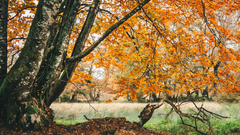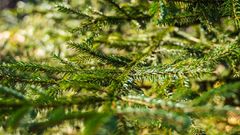
Sycamore Maple: meaning, symbolism and use
A mountain species, theSycamore Maple can live for 500 years and produces highly sought-after wood.
Sycamore Maple
The Sycamore Maple (Acer pseudoplatanus) is a deciduous tree in the Aceraceae family. Native to Europe and Western Asia, it is widely grown as an ornamental tree in temperate regions around the world, but also for the quality of its wood. It is also known as big maple or mountain maple.
Why does EcoTree plant Sycamore Maple?
Our foresters plant Sycamore Maples because this hardy species adapts well to different soil types and climates. It is a fast-growing species in its juvenile stage and behaves as a pioneer, making it interesting for new planting areas.
Sycamore Maple also provides shelter for many animals and insects, as well as food for certain animal species. It produces good quality, durable wood that is of interest to the timber industry.
Finally, it is a tree that is particularly appreciated for its aesthetics favoured by dense foliage, a large ovoid crown and an elegant shape.
Sycamore Maple - Overview
Sycamore Maple - Overview

Sycamore Maple - Species requirements
The Sycamore maple is a hardytree that grows well in temperate climates up to 1800 metres altitude. A semi-shade species in its juvenile stage, it grows very fast when young. It requires deep, slightly acidic to carbonated, well-drained soils rich in nutrients and water. It is susceptible to phototropism and its enemies are armillaria mellea, geometrids, hornets, bark beetles, xylebore and hoverflies.
It is also susceptible to damage by rodents (voles) and game during planting.
Sycamore Maple's wood
Sycamore Maple wood is considered to be a noble material and is highly sought after, especially when burned. It is used in cabinet making, joinery, violin making, and turning. In order to avoid the discolouration of its wood, which depreciates it, like that of beech, and because it is often planted in the company of forest species that are cut young, such as fir, it is often cut quite early.
Symbolism of the Sycamore Maple
TheSycamore Maple has a rich and varied symbolism in different cultures and traditions.
In Chinese culture, theSycamore Maple is associated with stability and strength because of its solid and steady growth. In Japanese culture, it is considered a symbol of longevity, wisdom and prosperity. Maple leaves are thought to be symbols of love and loyalty, while the seeds are symbols of prosperity. In Korean culture, the tree is associated with love and romance, as its heart-shaped leaves symbolise love and affection. In Native American culture, it is considered a tree of protection against negative energies and malevolent spirits. In Celtic culture, theSycamore is considered a symbol of wisdom, knowledge and spiritual guidance. The Maple leaves are believed to represent knowledge and wisdom gained over time.
Our selection of trees
Our goal is to enable anyone to do something that benefits nature and helps us to live in a more harmonious world. So why not become a tree owner in a European forest and help combat climate change?






Please note that this is promotional communication. See our notice of information.









